That seventies show: Francesco Vezzoli delves into the archives of Italian TV
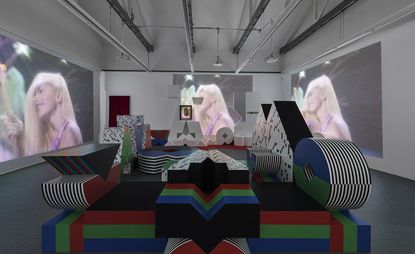
Francesco Vezzoli — the Italian artist known for his fascination with pop culture — is bringing back the 70s. Opening at the Fondazione Prada this week, Vezzoli’s exhibition delves deep into the archives of Italian broadcasting company Rai, dealing with television’s relationship with art, politics and entertainment.
In a fantastically psychedelic set (designed by M/M Paris, with whom Vezzoli has collaborated throughout the show) that recreates the vibe of a TV studio, Vezzoli’s consistent focus is women’s role on the small screen, and the way television served both the emancipation and exploitation of Italian women. The 1970s brought the TV diva: the ultimate Italian sex idol. Vezzoli explores this irresistible but problematic allure through the female hosts of TV shows such as Stryx and C’era Due Volte, alongside works by women artists of the same era, that disrupt this image, including Lisetta Carmi’s groundbreaking series, I Trasvestiti, which comprises intimate shots of transvestites taken in Genova, still radical even in the sexual context of Italy today.
The danger and pleasure in voyeurism is cleverly explored by other Italian women artists elsewhere. Giosetta Fioroni’s peep show, La Spia Ottica, is reconfigured from its 1968 iteration. Visitors can peer into a bedroom set where a female performer goes about her routine inside (the performance will be continuous throughout the exhibition’s run).
This flows neatly into a more direct confrontation of gender issues in the 1970s. A sumptuous reconstruction of a 70s nightclub — plush red velvet curtains, carpet, and furnishings — is the setting for large-scale projections of feminist footage from Rai’s newsreels. The TV announcements of referendums that resulted in the legalisation of divorce and abortion, in 70 and 78 respectively, are particularly poignant in the history of the Catholic country. Sicofoil works by feminist artist Carla Accardi are also presented as part of the set-up, uniting art and action.
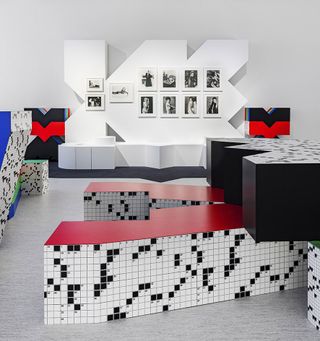
The show explores three stages of 70s TV production: ‘Art and Television’, ‘Politics and Television’, ‘Entertainment and Television’. Courtesy of Fondazione Prada
It’s a fight that perhaps many young Italians have forgotten now. The urgency continues upstairs in the most dense, difficult part of the exhibition, with video materials of news from Italy’s Anni di Piombo (Years of Lead) a time of heightened political tension. Does mass media communicate information or incite fear? The question seems to hang in the darkness of this more sombre section of the exhibition.
From fun and factual to cerebral and political, each space in this ambitious show has its own distinct atmosphere, and walking around it is like a flicking through channels. ‘I wanted to set a path that was risky and dense — one as difficult as the subject requires — but also entertaining and surreal,’ Vezzoli says.
It certainly is dense. It might take the average visitor a few trips to view all the materials here, but Vezzoli has handled the archives attentively, with a healthy dose of nostalgia and fondness for the lost traditions of TV. His personal paean comes in a new video work, screened in the foundation’s cinema, an edit of footage that influenced him through his childhood, (spent watching TV with his grandmother, to the dismay of his intellectual parents).
As well as reflecting on the way television documented and contributed to social change, shifts in Italian identity, art, design and culture, Vezzoli wants to inspire with possibilities of television as both a medium and media now. ‘Viewed with a contemporary eye, Italian television in the 1970s clearly demonstrates its anarchic, revolutionary character.’ It is this spirit that Vezzoli hopes to revive. Until that happens, the Fondazione Prada are running all-nighter marathons of the TV programmes that defined of the 1970s, from avant-garde series to variety shows and documentaries.
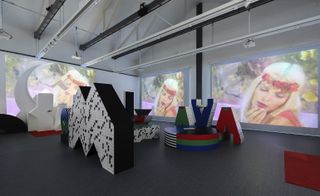
Italian TV is interpreted by Vezzoli as a driving force for change in the country
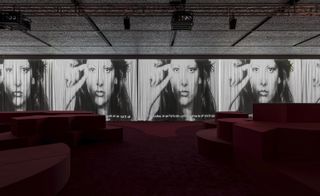
Vezzoli’s consistent focus is women’s role on the small screen
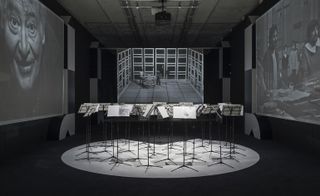
Apoteosi di Omero, by Giulio Paolini, 1970–71

The design of the show, realised by M/M Paris, combines traditional museum standards with the screening of moving images
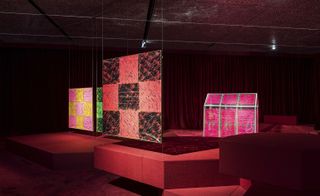
Installation view of ‘TV70: Francesco Vezzoli guarda la Rai’ at Fondazione Prada
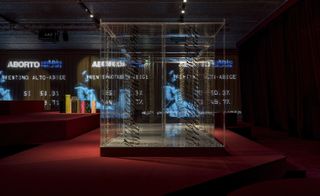
Casa Labirinto, by Carla Accardi, 1999 – 2000
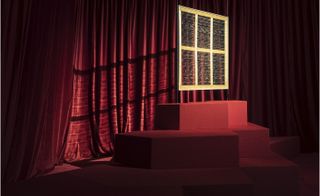
Grande trasparente, by Carla Accardi, 1975

Left, Paesaggio TV, by Mario Schifano, 1970. Right, Serigrafo bianco, by Michaelangelo Pistoletto, 1963-77
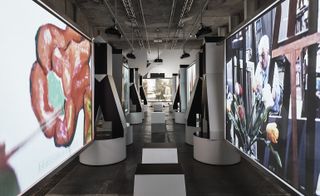
Installation view of ‘TV70: Francesco Vezzoli guarda la Rai’ at Fondazione Prada
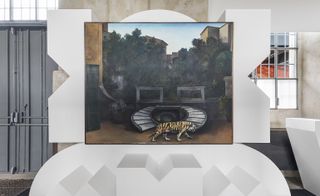
La visita della sera, by Renato Guttuso, 1980
INFORMATION
‘TV70: Francesco Vezzoli guarda la Rai’ is on view until 24 September. For more information, visit the Fondazione Prada website
ADDRESS
Fondazione Prada
Largo Isarco 2
20139 Milan
Wallpaper* Newsletter
Receive our daily digest of inspiration, escapism and design stories from around the world direct to your inbox
Charlotte Jansen is a journalist and the author of two books on photography, Girl on Girl (2017) and Photography Now (2021). She is commissioning editor at Elephant magazine and has written on contemporary art and culture for The Guardian, the Financial Times, ELLE, the British Journal of Photography, Frieze and Artsy. Jansen is also presenter of Dior Talks podcast series, The Female Gaze.
-
 A new limited-edition Rhodes piano and Gibson doubleneck guitar aim for the stars
A new limited-edition Rhodes piano and Gibson doubleneck guitar aim for the starsThe new Rhodes Mk8 Earth Edition piano and Gibson Jimmy Page EDS-1275 Doubleneck guitar revisit classic instruments at a price
By Jonathan Bell Published
-
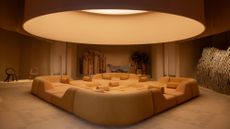 The new interior design trends we spotted at Salone del Mobile 2024
The new interior design trends we spotted at Salone del Mobile 2024These are the interior design trends to look out for in 2024 and beyond, from soft upholstery to conversation pits and low dining
By Rosa Bertoli Published
-
 Tiffany & Co nods to its theatrical history with a surreal new campaign
Tiffany & Co nods to its theatrical history with a surreal new campaignTiffany & Co campaign ‘With Love, Since 1837’ sees Dan Tobin Smith and set designer Rachel Thomas create an offbeat set
By Hannah Silver Published
-
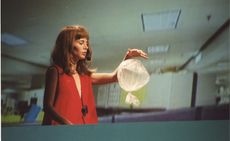 Miranda July considers fantasy and performance at Fondazione Prada
Miranda July considers fantasy and performance at Fondazione Prada‘Miranda July: New Society’ at Fondazione Prada, Milan, charts 30 years of the artist's career
By Mary Cleary Published
-
 Juergen Teller’s ‘i need to live’ explores beauty and fragility at Triennale Milano
Juergen Teller’s ‘i need to live’ explores beauty and fragility at Triennale MilanoJuergen Teller’s ‘i need to live’ is on show at Triennale Milano, following its Paris debut, and spans shots of Yves Saint Laurent and Björk, as well as quirky self-portraits
By Tianna Williams Published
-
 Triennale Milano exhibition spotlights contemporary Italian art
Triennale Milano exhibition spotlights contemporary Italian artThe latest Triennale Milano exhibition, ‘Italian Painting Today’, is a showcase of artworks from the last three years
By Tianna Williams Published
-
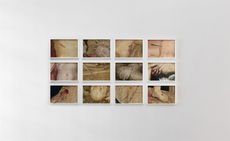 Walls, Windows and Blood: Catherine Opie in Naples
Walls, Windows and Blood: Catherine Opie in NaplesCatherine Opie's new exhibition ‘Walls, Windows and Blood’ is now on view at Thomas Dane Gallery, Naples
By Amah-Rose Abrams Published
-
 The best London art exhibitions to see now
The best London art exhibitions to see nowYour guide to the best London art exhibitions, as chosen by the Wallpaper* arts desk
By Hannah Silver Published
-
 Fondazione Prada exhibition is an ode to a vanishing Venice
Fondazione Prada exhibition is an ode to a vanishing VeniceAt Fondazione Prada’s 18th-century Venice palazzo, group exhibition ‘Everybody Talks About the Weather’ straddles beauty and fear and probes Venice’s precarious environmental future
By Will Jennings Published
-
 Raffaele Salvoldi stacks hundreds of marble blocks for dazzling Milan installation
Raffaele Salvoldi stacks hundreds of marble blocks for dazzling Milan installationFor a Milan Design Week 2023 installation, Italian artist Raffaele Salvoldi teams up with marble brand Salvatori to create architectural sculptures comprising hundreds of marble blocks
By Harriet Lloyd-Smith Published
-
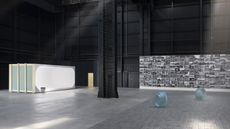 Ann Veronica Janssens wraps Milan's Pirelli HangarBicocca in light, mist and magic
Ann Veronica Janssens wraps Milan's Pirelli HangarBicocca in light, mist and magicA major survey of Ann Veronica Janssens’ work at Pirelli Hangar Bicocca, Milan shines new light on the sensorially stimulating work of the Belgian artist
By Benoit Loiseau Published